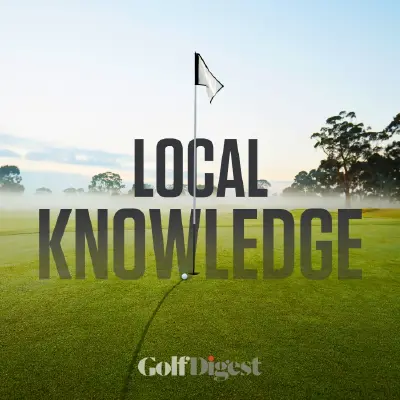
Local Knowledge
474 episodes Last Updated: Jun 17, 25
The best golf stories have multiple layers to them. In each episode, Local Knowledge dives deep into a subject golfers want to know about, whether it’s about the game they play, the competition at the highest level, or the surprising ways golf factors into larger conversations throughout society. Hosts Alex Myers, Keely Levins, Shane Ryan and Sam Weinman weave together original interviews, Golf Digest reporting, and additional elements to tell the type of compelling stories that have been a Golf Digest staple for decades.
Episodes
In 2008, after a disastrous start to the decade, the American Ryder Cup system faced a big problem: How do we start winning again? This series documents how they recovered from their lowest point to become a force again and start winning. In part one, we dive deep into the nightmare: The awful stretch from 2002 to 2006 that saw the U.S. at its absolute lowest, suffering a series of humiliations at home and abroad.
Oakmont Country Club will hold its tenth U.S. Open next week, and a tour of its past champions shows how the hardscrabble philosophy of its founders still prevails, and maybe even exerts a supernatural influence on this brutal, glorious track.
What happens when a winner's equipment is found to be nonconforming after the fact? The answer is, "nothing," at least in terms of the result. But as we'll see from the case of Rory at Quail Hollow, Tiger at Disney, and Tom Watson (twice!), things get more complicated in the court of public opinion.
For about 40 years in major championship history, winning the PGA required a test of endurance that seems absurd today. In the midst of tracking down the record holder for most holes played in a major, we ran into more than a few wild stories.
In a place where nobody escapes politics, Rory McIlroy has done his best to stay neutral, despite a tragic family history with the Troubles.
Apr 07, 2025
When Jim Murray fought Augusta National on race
L.A. Times Pulitzer Prize winner Jim Murray was one of the most celebrated sports columnists of his era, at a time when columnists held more influence and power by far than they do today. His humor and insight were legendary, but a lesser known element of his story is the personal boycott he led on Augusta National between 1968 and 1975, when he helped pressure the club to allow a black player into the Masters. On this week's episode, we look at Murray's quiet activism on the 50th anniversary of Lee Elder's pioneering first trip to Augusta.
From Greg Norman to Jordan Spieth, there is a long tradition of players speaking to the media after tough losses, but it's a tradition that is being lost in the modern game. Today we look at some of the most fascinating instances of player-media interaction after heartbreak, and how it made all parties better.
Mar 11, 2025
How the four majors became the four majors
In 1934, when the first Masters tournament was held, nobody in golf would have been able to tell you what the "majors" were, and if they had an opinion, it would likely include amateur events that were quickly losing prominence. By 1974, and the advent of the Players Championship, the four modern majors were set in stone, and the club was closed for membership. How did things change in those 40 years? How did the four majors become what they are, without any governing body to declare their status? In this episode, we dig into history to look at the humans and institutions who made the majors what they are today.
Feb 25, 2025
Tiger vs. Sergio: The Great Feud (Part 2)
The final part of our short series, chronicling the latter half of their rivalry and the infamous fried chicken incident.
Feb 11, 2025
Tiger vs. Sergio: The Great Feud (Part 1)
It started at the turn of the century and ran hot for 15 years. From the PGA Championship at Medinah the 2013 Players Championship, there wasn't an ounce of love lost between the two superstars. In Part 1, we examine the origins of where it all went wrong.